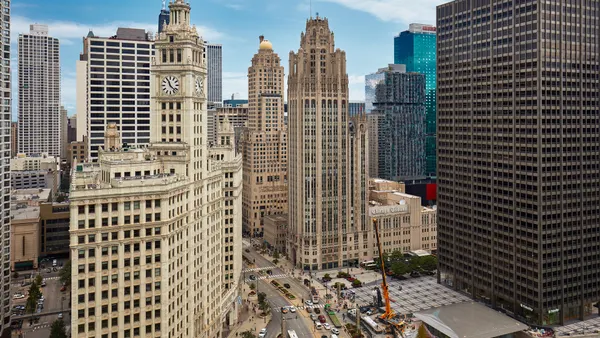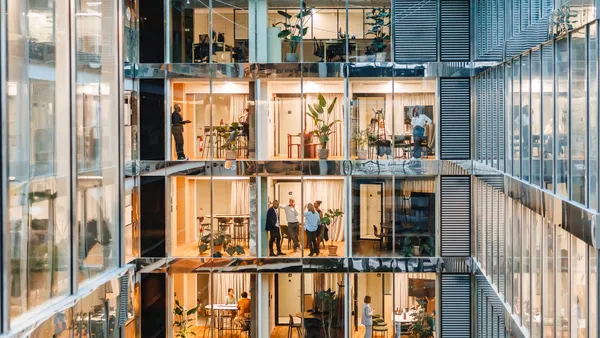Organizations are prioritizing workplace experience as a driver of real estate value, making employee satisfaction and operational efficiency a strategic asset that can support long-term business goals, CBRE says in a report released Thursday.
The traditional static, one-size-fits-all office is becoming obsolete, according to the latest report in CBRE’s 2024-2025 Global Workplace & Occupancy Insights series. Workplaces that drive experience integrate biophilic and other design elements and curated amenities that can create spaces that employees want to return to, “not out of obligation, but because they enhance the workplace experience,” CBRE says. Biophilic design refers to design that connects people to nature.
To attract employees to the office and make sure they want to return, office operators must take regional and generational differences into account, the report says. Each region brings unique economic conditions and cultural expectations that shape workplace behaviors, CBRE says.
At the same time, the future workplace must reflect the needs of a multigenerational workforce. While both seasoned professionals and emerging talent desire environments that support productivity and personal connections, the former group focuses on practical application of knowledge and data driven metrics while the latter prioritizes strong company culture and employee experience.
“Bridging these perspectives is key to designing spaces that resonate across generations,” CBRE says.
Gender differences also play a role in the workplace, with men preferring to be in the office more than women, according to an Aug. 25 report by Cushman & Wakefield. While both groups report better ability to focus while working remotely, women are more likely to choose remote work specifically for this reason, the report says.
Women are also more likely to work remotely for work-life balance, while men go into the office for social connection, Cushman & Wakefield says. These differences make it important to design workplaces “for the whole person,” with a focus on personalization over standardization, the firm says.
“One-size-fits-all solutions fall short; equity requires tailoring approaches to different groups’ professional and personal realities,” Cushman & Wakefield says. The report notes that as preferences change over time, operators should also monitor feedback to keep workplace design relevant and inclusive of shifting life and work dynamics.
These changes are becoming more important amid a strengthening of return-to-office mandates. Just over half of organizations surveyed by CBRE are expecting workers to come into the office three days a week, 9% are requiring four days a week and 17% are requiring full-time attendance, according to CBRE’s 2025 Americas Office Occupier Sentiment Survey, released earlier this month.
The numbers are moving toward more time in the office. High-profile organizations like Paramount recently announced a five-day-a-week model and others are increasing their on-site time requirements. A recent internal survey by HireQuest, a staffing network with 450 U.S. locations, found that 60% of employers are requesting a 5-day in-office model, a company spokesperson said.
These beefed-up mandates are helping drive attendance bumps, but hybrid work is still the norm for now, according to a Cisco survey. About 40% of interactions in the office still have at least one person joining remotely, on average.
“Technology is the backbone of modern occupancy strategies,” CBRE says. “From space reservation systems to AI-powered analytics, organizations are climbing the technology maturity curve to better manage space fluidity, predict demand through deeper employee insight and optimize portfolios.”










